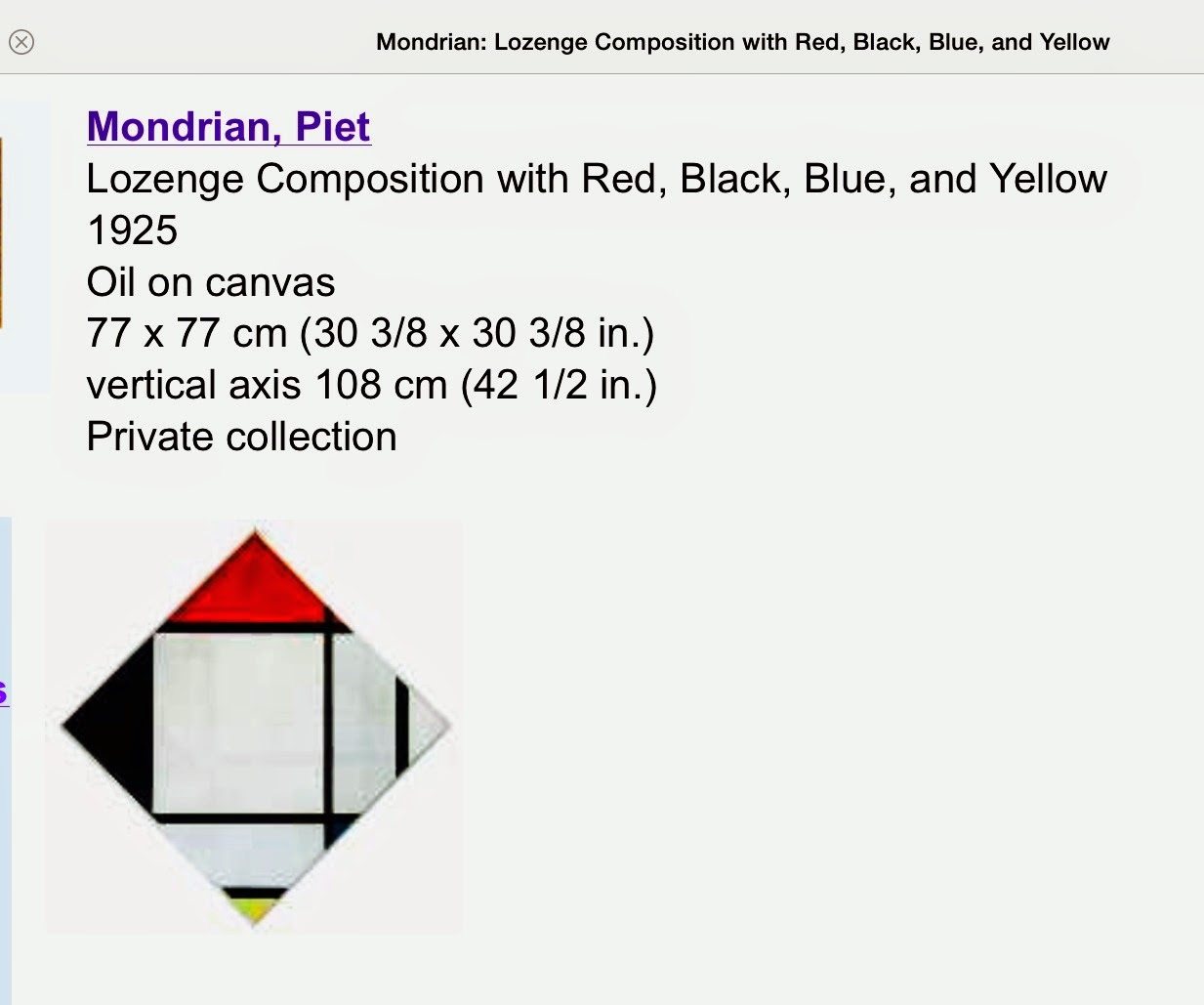
Dear Gentle Readers,
This morning I would like to introduce you to a Dutch painter known for color blocking. PIET ( Pieter Cornelis) MONDRIAN was born on March 7, 1872 in Amersfoort, Netherlands. He was an important part of an art movement called the DeStijl Art Movement. His clean use of line and grid shape, along with the use of primary color blocks, is still modern and refreshing today.
Mondrian was one of my favorite artists in school. A Mondrian jumps out at you from among the muted oils and shadowy figures of the master painters and it had a distinct energy urban about it.
This particular Mondrian painting entitled Broadway Boogie Woogie reminded me of the video game PACMAN, and the countless hours at the video arcade trying to beat my own score. I know, some times I am such a child!

Piet Mondrian termed his art Neoplasticism, which is a white background with black grid lines and three primary colors. His peers called his work the closest thing imaginable to pictorial harmony.
He said his work was a study in the positive and negative. He claimed the positive and negative broke up the oneness of the object, that oneness was the cause of all unhappiness, and that the union of positive and negative was...wait for it, wait for it...HAPPINESS! Now, who doesn't want happiness?
Looking at these two photos, Young Piet (above) and Old Piet, (to the right) he doesn't look like a man suffering from happiness overload, does he? Or, is this a sign of the times; I am taking your photo, don't smile!
It is said that his New York City Studio was spotless white, more like a laboratory than an art studio. The only color were rectangular matboards in eye-popping primary colors, and he would rearrange them from time to time to make them look more cheerful.
Piet Mondrian looked more like a school teacher than am artist. He died in New York City on February1, 1944, but his influence has been felt for centuries afterward.
Famous Piet Mondrian Quotes:
"The emotion of beauty is always obscured by the appearance of the object. Therefore, the object must be eliminated from the picture."
"To approach the spiritual in art, one will make as little use as possible of reality, because reality is opposed to the spiritual."
"I don't want pictures, I want to find things out."
With the development of the Minimalist Movement of the late 1960's, Mondrian's work came to the forefront in all sorts of unexpected places, like Yves. Saint Laurent's Clockblock clothing line and the cover of the rock band White Stripes 2000 album, De Stijl, as well as using his name for three "Mondrian" hotels in New York, Los Angeles, and Paris.
Using Mondrian examples in there classroom helped those students who felt they had little art talent to be able to create beautiful works of art that they were proud of, as well as giving them some confidence in their own abilities.
If I have whet your appetite to know about this strange and wonderful Dutch painter, may I suggest:
Mondrian by Jose Maria Faerna
Piet Mondrian: 1872-194; Structures in pace by Susanne Deicher
Mondrian by Hans L.C. Jaffe
Mondrian by John Milner
Mondrian, The Path to Abstraction by Hans Janssen

Resources for this articles:
Piet Mondrian. wikipedia
artchive.com
theartstory.org
Mondrian Trust, The Official Site.






nul
ReplyDeleteYes very fresh, l like to bring the colours around the edge of the Canvas it is very satisfying.
ReplyDeleteHello maate nice blog
ReplyDeleteI find Mondrian's use of color blocking to be very appealing.
ReplyDelete